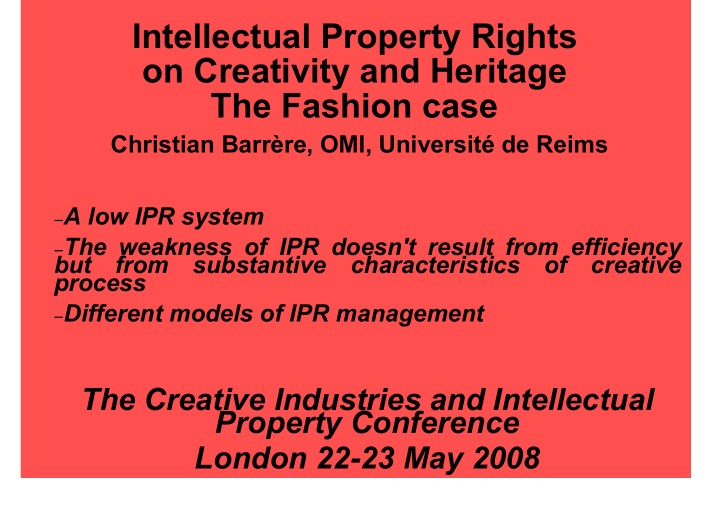



Intellectual Property Rights on Creativity and Heritage The Fashion case Christian Barrère, OMI, Université de Reims − A low IPR system − The weakness of IPR doesn't result from efficiency but from substantive characteristics of creative process − Different models of IPR management The Creative Industries and Intellectual Property Conference London 22-23 May 2008
Problems 1 Non separability to define the and non additivity entitlement 2 Non reproducibility to organize a market for IPR 3 Idiosyncrasy to enforce IPR to justify IPR
The Classic Model of the Maison the creator as the residual claimant low legal protection of creative products and heritages but social protection through the personal relations model reputation and « griffe » with external and overlapping effects (accessories) No market for IPR static efficiency but loss of dynamic efficiency
The New Model of Luxury Groups New problems: 1 increase in the value of creativity 2 reproduction over time 3 allocation across space a demand for IPR privatization of craft knowledge heritage From the griffe, a personal PR, to the trademark, a market PR Creative piracy IPR on common heritage assets
Some conclusions specific : • 1 weakness does'nt derive from efficiency • 2 Different models of IPR management related to the Old, the Classic and the Modern Models of fashion • 3 new stakes: the free riders of the street fashion general: − substantive vs. formal conception of PR
YSL 1965: the Mondrian collection
Piet Mondrian
Piracy
Piracy? Inspiration? Homage? Vialli: homage to YSL
The end ... sorry for my bad English ... Thanks.
Recommend
More recommend